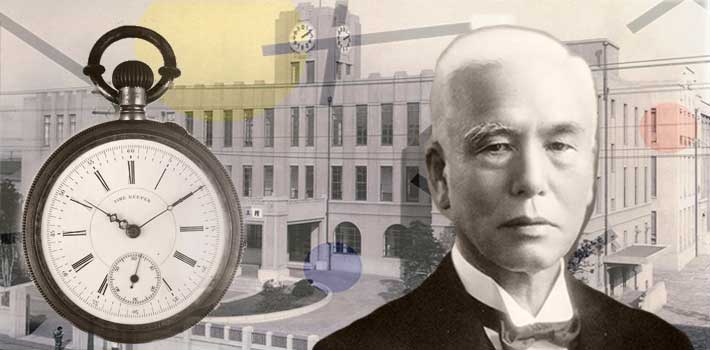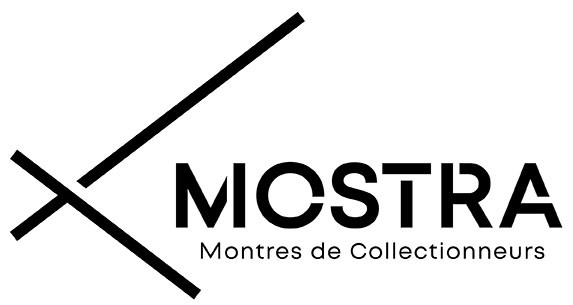
Having become one of the main players in the Japanese watch industry since the middle of the twentieth century, the Seiko watch manufacturer was at the forefront of the Japanese commercial offensive of the 1970s on a world watch market numbed by years of hegemony. of Swiss watchmaking.
Created in Tokyo in September 1877 by Kintaro Hattori, this brand will permanently change the sector with a unique and very daring approach to how to design and use a professional watch in everyday life.
It is in a very traditional approach that the founder launched his activity: creation of a clock repair workshop in his home, followed a few years later by a clock repair and sale shop and in 1892 by the creation of a brand: Seikosha which can be translated from Japanese as “inhabited by success”.
A visionary and passionate about mechanical techniques, Hattori moved his business from repair to manufacturing after buying a large disused factory in the suburbs of Tokyo.
This will be the beginning of the adventure of Seikosha which will initially be confined to the Japanese domestic market with in 1895, the first pocket watch made in Japan and in 1913, with the model "Laurier" or "Laurel" the first watch Japanese-made bracelet.

After the destruction of the factory in 1923 and its reconstruction the following year, it was the production of watches and measuring instruments that gave the brand its importance and its industrial resources. The Second World War, which will drag Japan into the war, gives Seiko orders for technical watches for the Japanese army and navy.
Suddenly around 1937, the increase in Seiko's production lines takes on a dimension never seen in the sector: New factories create many new models of watches are developed and manufactured using huge production lines.
All the specialties are considered by the company: on-board clocks, artillery chronographs, prescription watches, automobile and aviation counters, a production which will earn Seiko the support of the airmen of the Japanese naval air force who will attack Pearl Harbour. In this manufacturing logic, Seiko in 1941 produced its first pocket chronographs for naval and submarine forces.

At the end of the war, only one of the eleven Seiko factories will be preserved from the intense American bombardments in Japan. At the end of the 1950s, the company will have access to the national reconstruction effort, initially directed towards heavy industries such as the automobile and machine tools and which will then concern the processing industries of which it is a part.
This is a new era for the manufacture which will quickly see a population of former soldiers and specialized and highly qualified workers return to its ranks. These men experienced in perpetual improvement processes based on the user experience and having had to innovate in the register of mass production will give Seiko a new impetus which will durably reorient the company towards inexpensive but of a high quality of parts produced.
It is also a rise in research into new models of watch movements and the use of new technologies that will allow Seiko to move towards the end of the 1950s towards the first quartz clock movements. In the following decade, the Manufacture will deploy its talents on two axes: high quality mechanical watches through the “Grand Seiko” brand positioned in a luxury segment and its traditional production oriented towards wider distribution.
It was a succession of patents and innovations that enabled Seiko to win several titles and prizes of excellence, such as "the best automatic wrist chronometer in 1968 and the mass production of an automatic column-wheel chronograph and vertical clutch. From 1968, Seiko had more than two hundred observatory chronometers certified by the Neuchâtel observatory. In 1969, Seiko, with the Astron, was the first manufacturer to produce the first mass-produced quartz watch.

From the seventies, a new component of Seiko's success appeared: Japanese design where the central rule was to create a beautiful object that is useful.
These contemporary designers inspired by European, American, and Scandinavian cultures will reshape the appearance of Japanese productions in “kansei” fashion. It was the time of the Japanese economic miracle with the arrival on the world stage of new brands and new concepts during the "izanagi" boom: Sony and its walkman, Datsun and its fabulous Z432, for Seiko it is the successful marketing of chronographs with Kakume counters or “television screens”, diving watches that can be worn with formal clothing, bullhead watches and, in the more generalist segment, accessible quartz chronographs and LCD watches.
This momentum of production arouses a real echo with world consumption, sales take off and Seiko develops a marketing method in which it will segment the world into large regions for which it will produce different models in accordance with expectations and needs. consumers. This innovative and effective distribution will end up shaking the Swiss watch industry, which is gradually sinking into a watchmaking crisis that will put it in the background for many years. At the end of the 1970s, Seiko would be, with its alter ego Citizen, one of the two pillars of a Japanese watchmaking sector which was evolving towards a globalization of supply, leaving far behind it the ashes of numerous European manufactures unsuited to the economies of scale and dependent on multiple suppliers with a precarious economic balance.
.../...
to be continued


